Special for the Armenian Weekly
Travellers visiting the bustling city-state of Singapore may not be aware of the great impact made by the Armenians who form one of its smallest minorities. Between 1820 and 2000, fewer than 700 Armenians ever lived in Singapore. Although most were transient, with a mere 12 families residing for three generations, they have left a legacy incommensurate with their numbers. Along with the Church of St. Gregory the Illuminator, the oldest existing church in Singapore and its parsonage, there are other reminders of the Armenian presence. These include Raffles Hotel, the Straits Times newspaper, and Singapore’s national flower, Vanda Miss Joaquim.

As in most cities where Armenians settled, there is an Armenian Street. In Singapore, this short street gained its name because it bordered the back of the church property. Three other streets attest to the Armenian presence: Sarkies Road, named after property owner Regina Sarkies; Galistan Avenue, which recognizes the work of Emile Galistan of the Singapore Improvement Trust; and St. Martin’s Drive, which commemorates the philanthropic Martin family who once owned a mansion and substantial property along Orchard Road. Stamford House, built by the firm of Stephens Paul in 1904, still stands offering insights into Edwardian architecture.
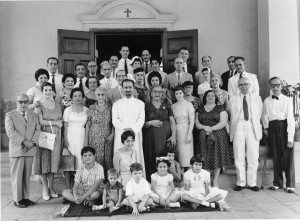
So, when and why did Armenians arrive in Singapore and what happened to them?
They were descendants of Armenians from Persia, in particular those deported from Julfa to Isfahan by Shah Abbas in the early 1600’s. In later years some of those Armenians migrated to India, the Dutch East Indies, Burma, Malacca, Penang, and lastly to Singapore, thus forming an extensive trading diaspora. To better assimilate, most Persian Armenians Anglicized their names; thus some surnames are not recognizable as Armenian. For example, Mardirian became Martin, Stepanian became Stephens, and Yedgarian became Edgar.
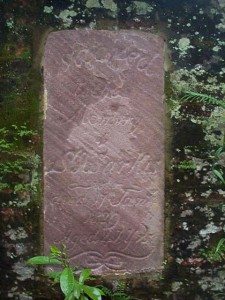
In 1820, one year after the British opened a trading post in Singapore, the first Armenians, the apparently unrelated Aristarkies Sarkies and Sarkies A. Sarkies, arrived from Malacca. They were soon joined by Carapiet Phannous, Mackertich Moses, the Seth brothers, and the Zechariah brothers. All were traders or commercial agents. By 1824, there were 16 Armenians out of a population surpassing 10,000. More arrivals trickled in hoping to make their fortunes in the new duty-free port.
Before long, the Armenians wanted their own priest rather than relying on visits from the priest in Penang. In 1825, Isiah Zechariah, on behalf of the community, wrote to the archbishop in New Julfa asking that a priest be sent to Singapore, and in 1827 Reverend Gregory Ter Johannes duly arrived. The next step was for the Armenians to have their own church. Having been granted land by the governor, the community, which was basically comprised of 10 families, raised most of the construction costs. In 1836, the Armenian Apostolic Church of St. Gregory the Illuminator was consecrated, and for the ensuing century met the needs of the growing community.
Between 1820 and 1983, Armenians in Singapore operated more than 85 commercial enterprises. Most set up as traders, specializing in importing textiles and exporting regional produce. Such firms included Andreas & Company, Edgar & Company, Demetrius & Company, Arathoon Brothers, and Chater & Company. The Calcutta-based Armenian shipping line Apcar Brothers was patronized by the Armenians, and was also the main carrier of the then-legal opium into Singapore from the 1860’s until the 1880’s.
Some firms petered out after a short time, whereas Sarkies and Moses, founded in 1840, lasted until 1913. Others developed into multinational import and export firms, including Edgar Brothers (1912-68), Stephens, Paul, and Company (1896-1941), and A. C. Galstaun (1957-83).
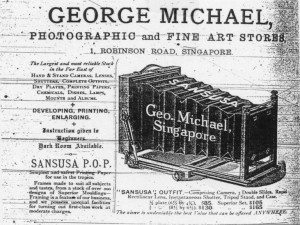
A few individuals owned law firms, restaurants, watch-making, and jewelry shops, auction houses, small factories, and photographic studios. The legal firm of Joaquim Brothers was well known throughout Malaya until its closure in 1902, while George Michael was running Singapore’s leading photographic studio when he left in 1919.
The hospitality industry attracted many Armenians, their ventures ranging from small boarding houses to the grandest of hotels: Raffles Hotel. This future icon was the initiative of Tigran and Martin Sarkies, who were already running two successful hotels in Penang: the Eastern Hotel and the Oriental. Propitiously, they named their hotel after Sir Stamford Raffles, Singapore’s founder, whose statue had recently been unveiled amidst much pomp and splendor.
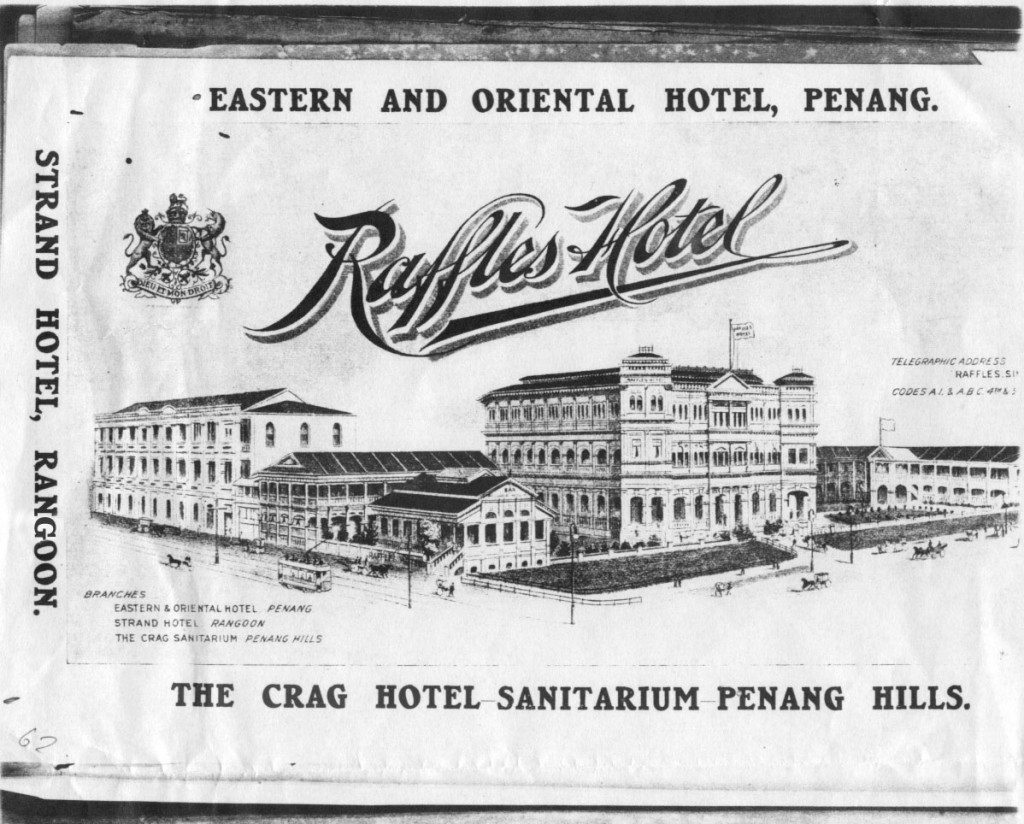
Opened in December 1887 and managed by Tigran, Raffles Hotel quickly established a reputation for its dining innovations. Its fame escalated after its magnificent new Renaissance-style block was opened in 1899. The grandest balls and banquets were hosted at Raffles, and guests included royalty and celebrities such as Somerset Maugham and Noel Coward.
Managed by Tigran for nearly 20 years, then his younger brother Aviet for another 10, the hotel reached its halcyon days in the 1920’s under managing proprietor Martyrose Arathoon.

For a short time at the turn of the 20th century, the three major hotels in Singapore were managed or owned by Armenians. Competing with Raffles was the Adelphi Hotel run by Johannes and Sarkies, while even the exclusive Europe Hotel was being managed by Joe Constantine. Before that, there had been a series of Armenian hoteliers operating smaller hotels, including Moses’ Pavilion and Bowling Alley, St. Valentine’s Bath Hotel, and Goodwood Hall and the Sea View Hotel, which was finally acquired by the Sarkies brothers. The Oranje Hotel, in today’s Stamford House, which was run in the 1950’s by Klara van Hien, was the last of the Armenian hotels.
Some of the pioneering merchants built or acquired magnificent houses, and played a significant role in the educational, economic, civic, and social life of the colony. They served on various committees including the first Chamber of Commerce, which met in 1837. In 1895, two out of the eight elected municipal commissioners were Armenian: a very high ratio for such a small community.
A notable individual was prominent lawyer Joaquim P. Joaquim (Hovakimian) who served as president of the Municipal Commission, a member of the Legislative Council, and was appointed deputy U.S. consul in 1893. Another prominent figure was George G. Seth, who rose to become solicitor-general of the Straits Settlements in the 1920’s and later served as acting attorney-general.

One Armenian who received posthumous fame was Agnes (Ashkhen) Joaquim. In the 1880’s she hybridized an orchid by crossing the Vanda teres with the Vanda Hookeriana, thus creating the flower named after her: the Vanda Miss Joaquim. Propagated by cuttings, this orchid proliferated not only in Singapore but in the other tropical countries where it had been introduced. It became especially popular in Hawaii, where it is better known as the Princess Aloha orchid. In Singapore, the orchid was selected as the nation’s national flower in 1981.
The Armenians were very loyal to Britain; Hoseb Arathoon, for example, donated an aeroplane to the British War Office in 1915, and young men volunteered for both World Wars. The community was also acutely aware of the suffering of their brethren in Turkey and raised large amounts of money for the victims of the massacres of the 1890’s and later the genocide.
Although the community was too small to run its own school, an Armenian newspaper was printed for a short time. Gregory Galastaun published “Usumnaser” (“The Scholar”) from 1849 until 1853, with his friend Peter Seth creating an exquisite etching of Singapore for the masthead.
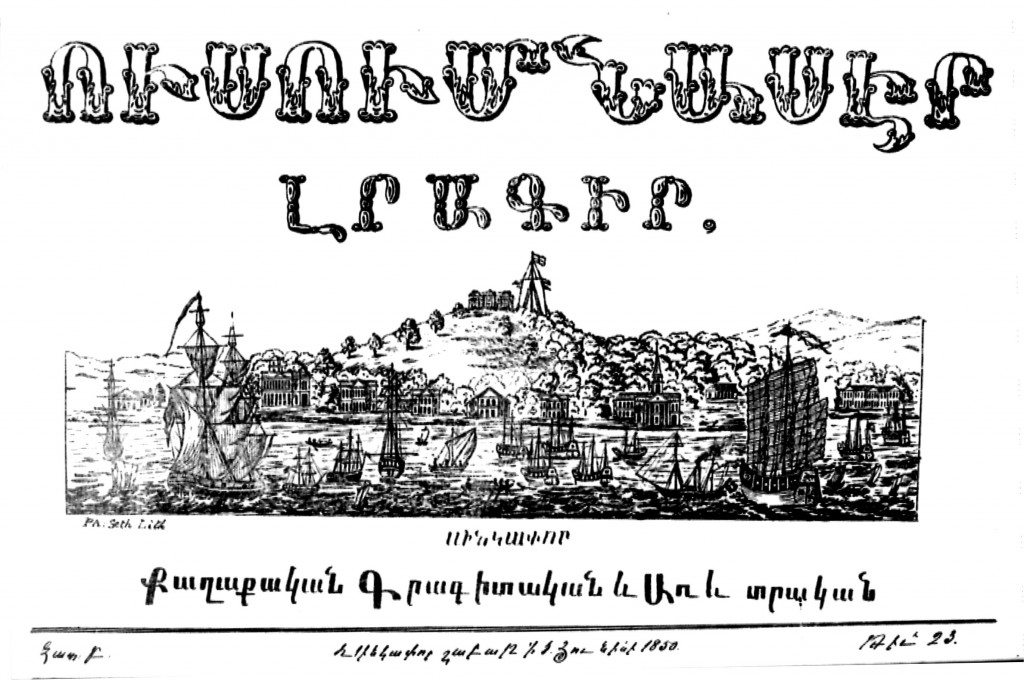
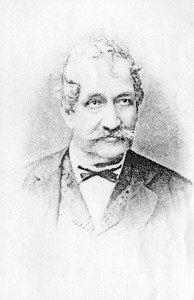
In 1845, Catchick Moses had established the “Straits Times” newspaper, which today is the leading newspaper of Southeast Asia. Moses had acquired the printing press to help out his beleaguered compatriot, Martyrose Apcar, but soon sold the newspaper to the paper’s editor, Robert Woods.
‘Armenian numbers peaked at just over 100 in the 1920’s. A branch of the AGBU was up and running, Raffles Hotel was in full swing, and the trading firms were busy and all employed young Armenian men often from other Armenian communities. However, this was the calm before the storm. First came the Depression, which adversely affected the trading companies in particular; then in 1938, the last resident priest returned to New Julfa; and in 1942 Singapore fell to the Japanese. The Armenians suffered diverse fates: Some women and children escaped to Australia, while their menfolk enlisted. Civilians who were British subjects were interned, while those who were classified as Persians were not. Death struck both soldiers and civilians.
After the war, a new Singapore emerged: one in which Armenians faced limited prospects. The few Armenian firms included Edgar Brothers and Arathoon Sons, and A. C. Galstaun, which was the last of the Persian-Armenian firms. Gradually the families migrated mainly to Australia, the U.S., or Britain.
By the 1970’s the community had virtually disappeared; only a handful of the old families who still spoke Armenian remained. The very smallness of the community, which had helped it to integrate, also helped cause its demise: It was demographically unviable. Intermarriage and the consequent assimilation into a larger culture, death, and emigration had taken their toll. In 2007, Helen Metes, the last of Singapore’s Persian Armenians, died.
But not the Armenian community of Singapore. This has been revitalized by the recent migration of Armenian entrepreneurs from Armenia and Russia. Along with other expatriates they are creating a new, vibrant, and growing young community, building on the past to secure a sound future for Armenians in Singapore.
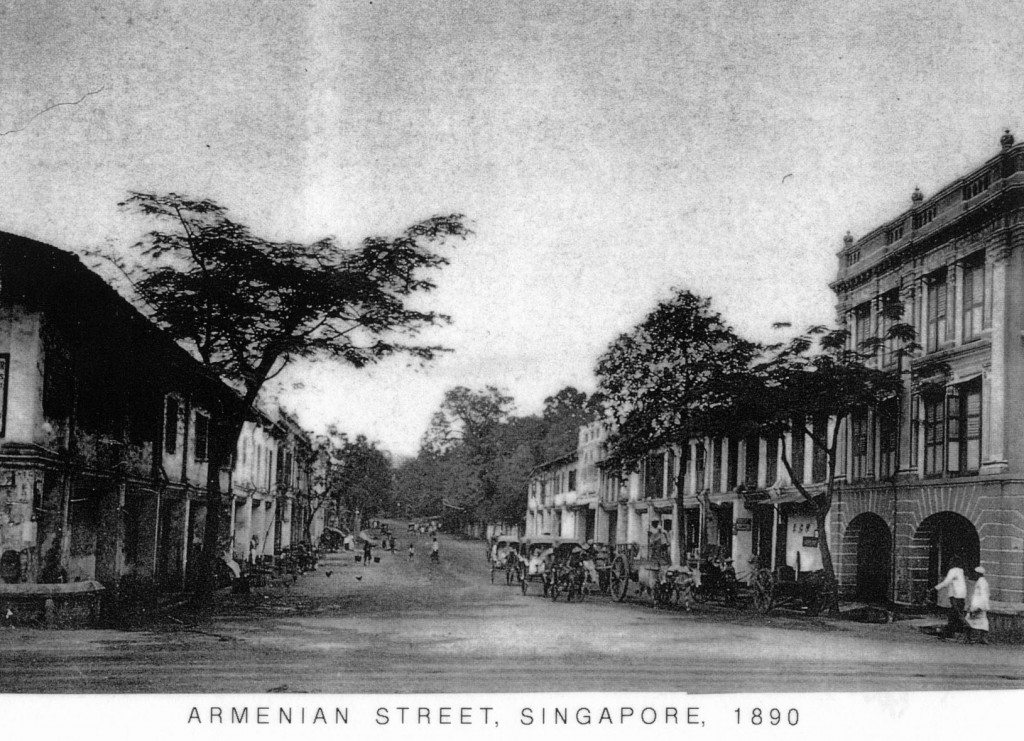
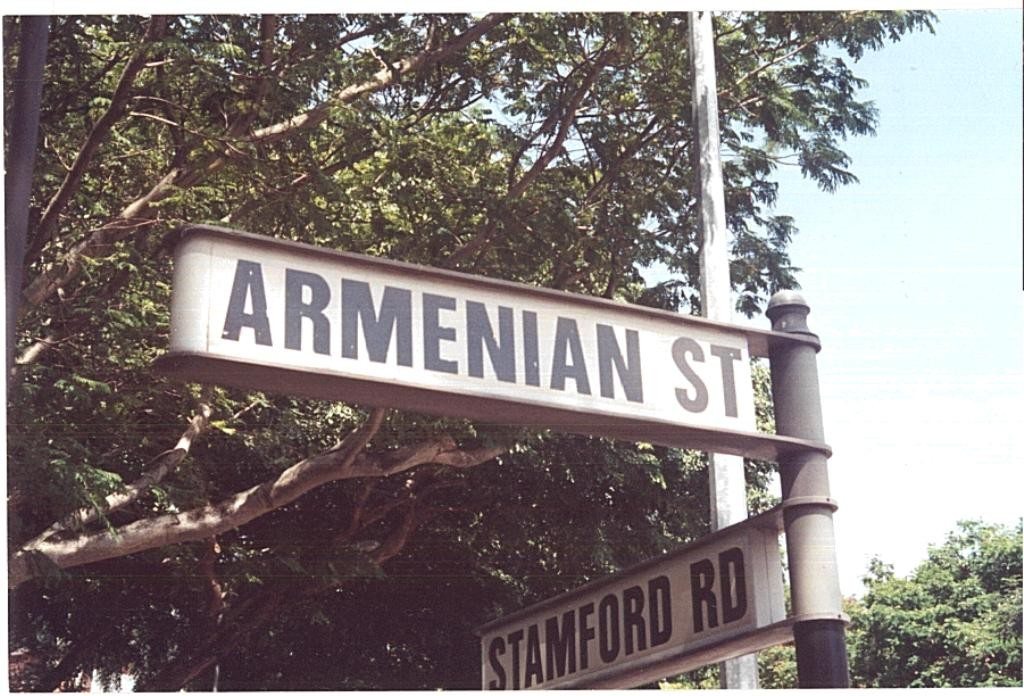


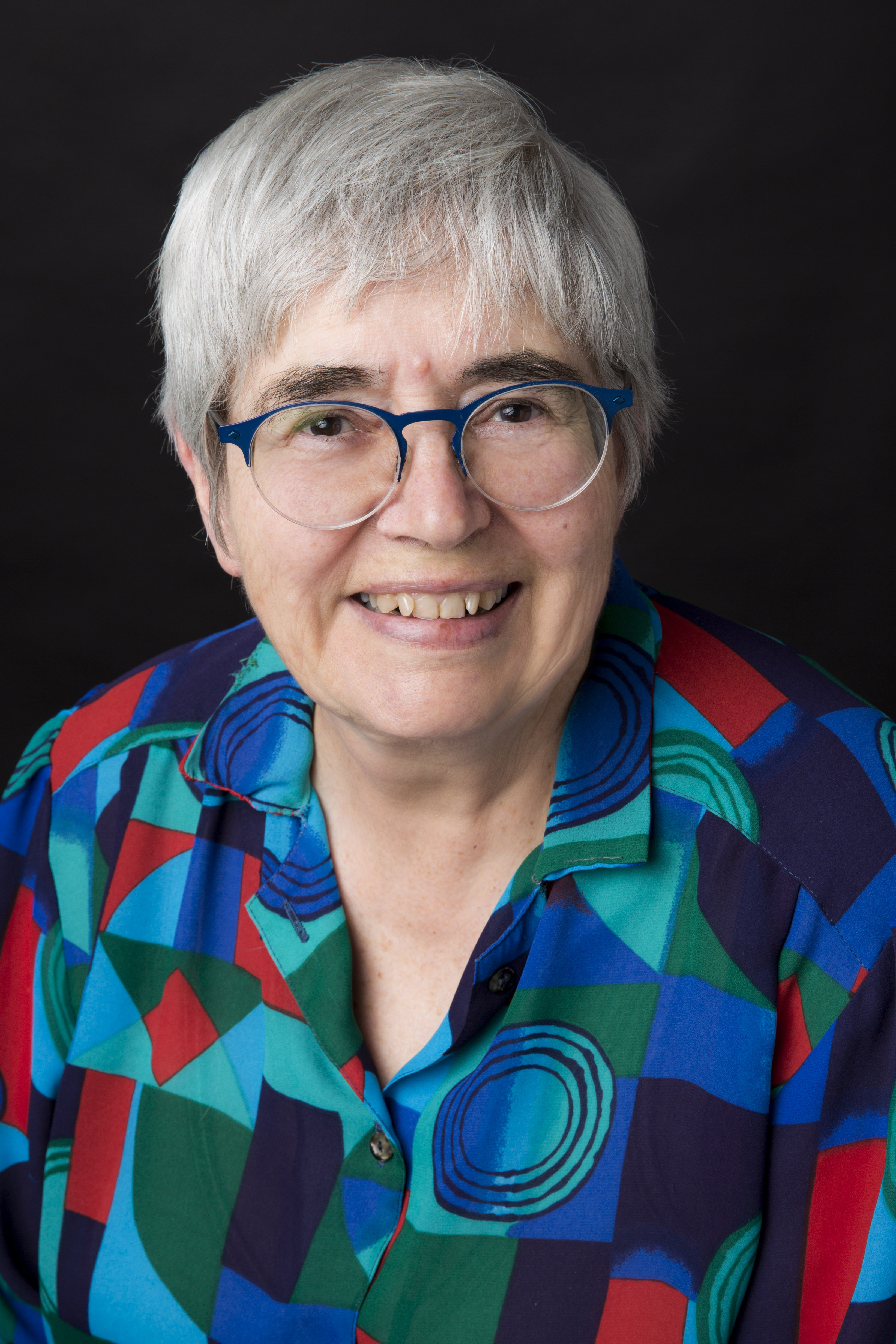
thank-you intersesting
Dearest Dr. Wright,
Thank you, as always, for preparing and for sharing such a wealth of information for us to enjoy!
You remain a bright light amongst the modern day scholars of Armenian history, and you contribute immeasurably to the corpus of knowledge regarding the Armenians in Singapore, Penang, the Malay Peninsula, and points beyond. Be assured that all of your efforts are truly lauded!
I am one of your faithful readers, and I sincerely commend you for each and every detail which you have discovered and continue to share with all of us. The community of Armenians spread across colonial Asia is deserving of praise and is worthy of scholarly research, especially of yours!
May the New Year bring you and your family the best of health, and may you persevere in your most appreciated studies and articles!
All my best to you always,
Rev. Dr. George A. Leylegian
Wonderful and very interesting article. I visited Singapore in the 1980’s and made it a point to see Armenia Street, the Armenian Church and adjacent cemetery, and the Raffles Hotel. This article places everything in perspective for me.
V.N.
Exceptional research beautifully illustrated, thank you Nadia. A note and a question. In the middle of the photo captioned “Armenians in Singapore in 1960” stands Father Aramais Mirzaian who also served for decades as a priest in the Armenian community in Sydney. Question: I query if the reference to “A. C. Galstaun (1957-83)” in the article is to Arshak Galstaun, the founding benefactor for Galstaun College, an everyday primary and secondary Armenian school in Sydney – http://www.galstaun.nsw.edu.au/benefactors. Prior to settling in Sydney Mr Galstaun was a merchant and trader in South-East Asia.
Yes. A. C. Galstaun is indeed Arshak Galstaun. He arrived in Singapore in 1937 and initially worked for Edgar Brothers. After the war Arshak worked for several firms before establishing his own company in 1957. It specialised in the reptile skin trade, and expanded into Australia and the Pacific Islands. In the post-war years Arshak was the doyen of the Armenian community and served as president of the Church trustees for over 30 years. In 1983 Arshak and his wife Sophie migrated to Sydney which was already home to a community of Armenians from Southeast Asia.
I am so glad that the Singapore Government did not allow our late Archbishop Aghan Baliozian to sell the Singapore Church and properties, the way they sold the Surabaya church and other properties and blue up the proceeds into the thin air.
Let Sydney Diocese explain to what happened to all those monies.
This is in line with the new wave of doing things with Armenian leadership nowadays, be it for selling churches and assets to closing schools and selling the properties. No one is accountable for anything and we Armenians are idiots for not asking and demanding accountability from those in charge, whoever can sell anything and get away with it is and will be doing it forever. We deserve what we get.
We are shocked to see this comment… Late Archbishop Baliozyan was a true spiritual leader of Armenian Church in Singapore. Not only did he not attempt to sell the Armenian Church property, he was in fact the spiritual leader of a coalition of volunteers and benefactors from around the world who joined together in 2001 and worked tirelessly to oust the former Trustees of the Church over THEIR intent to sell the Church Property.
In 2013, a Cross Stone (Khatchkar) in memoriam of Late Archibishop Baliozyan was erected in Singapore’s Armenian Church grounds.
I both enjoyed and found this of great interest.
Great writer and great article, whose reference I used when writing my own paper on the topic.
Very interesting. Thank you for the information. A question: would you by any chance have some background information regarding the Strand Hotel in Rangoon which my uncle, Pete Aratoon, owned? My father and uncle (pete) were cousins to A C Galstaun.
A little early background. Aviet Sarkies opened Sarkies Hotel in Yangon (Rangoon) in 1893, but in 1898 announced plans for a new hotel. Financed by British interests, this 43-roomed three storeyed hotel was leased by Sarkies Brothers and opened as the Strand in 1901. With its first class accommodation, dining and tiffin rooms, billiards rooms and palm lounge, the enterprise proved very successful. Aviet Sarkies managed the hotel for the next 9 years. When he returned to Singapore to manage Raffles, other Armenians including his nephew Sarkies Johannes ran the hotel. In 1915 compatriot Joe Constantine was appointed manager, retaining the post until Sarkies Brothers sold the Strand in 1923.
Thanks for all of the great information and the great article!
Dear Dr. Wright,
I live in the USA and am originally from Iran. A friend sent me this article written by you.
My sister and I spotted our mother’s uncle in the group picture. His name was Minas Grigor Ohan. He was originally from Isfahan, Iran and was a well known merchant in the area, but his residence was in Indonesia.
He is the first gentleman on the left on the row before last.
Do you have any specific information about him?
My mother, who was his niece, traveled to Indonesia in 1947 after her uncle was deceased a few years earlier. She went there after she was informed by, I think, the Surabaya Armenian church that her uncle had left some objects of value for her and his sisters living in Iran.
We were young children then and may have forgotten some of my mother’s stories after she returned from her very difficult trip.
Could you possibly have more specific information about our great uncle to share with us?
We enjoyed your article.
Thank you very much.
JM
Dear Jim:
I have only a few details. The man in the photograph went by the name of Minas Ohan Gregory in Singapore. He was born in 1883 in Persia and arrived in Singapore around 1912, finding work as an assistant at Raffles Hotel. From 1920-1926 he managed the hotel’s Cafe and Confectionery as well as the Raffles’ Motor Garage. In 1922 he had married Helen Sarkies Peters. In the early 1930s the couple settled in Surabaya, but soon afterwards, divorced. Helen re-married and settled in the USA. Minas was killed on 1 November 1942 during the Japanese occupation of Surabaya.
Thank you Doctor Nadia Wright for answering my question. By-the-way my first name is John, not Jim. I was actually named after my uncle John-John who was sent to India to go to school in Darjeeling in care of his uncle Minas, because his father was killed one night by an unknown gunman, and his mother (my grandmother could not afford the cost of his education. He died shortly after his arrival due to blood poisoning after injuring his toe while exercising, that caused gangrene infection. He was 18 years of age.
Dear John:
Please accept my apologies for mistakenly addressing you as Jim, especially after reading why you were named John.
Dear John,
Its more than seven years since your posting, but here’s my contribution:
My late wife was Margot Johan and her mother (Lena or Khatchatoum Sarkies) was a goddaughter of Minas Gregory. He paid for her education too. She attended a British school in Kolkata (Calcutta) following which he insisted on her coming to Surabaya in Indonesia as a companion for his wife Helen (Peters/Petrosian). My mother-in-law died in the Netherlands in 1966 following a car accident. Helen was her cousin and died as Helen Zeehandelaar in Denning, New Mexico in 1998. In the Straits Times, the wedding to Minas Gregory in Singapore was described:
http://newspapers.nl.sg/Digitised/Article.aspx?articleid=straitstimes19221213.2.78
The Straits Times, 13 December 1922, Page 9
“The wedding took place at the Armenian Church of St Gregory, Hill St yesterday afternoon, of Mr Minas O. Gregory of Raffles Hotel and who is also a well-known racehorse owner, with Miss Helen Sarkies Peters. The church was filled for the ceremony, which was solemnised by the Rev. S.T. Sarkies with the full orthodox ritual of the Armenian church, a feature of the ceremony being the covering by the priest of the bride and bridegroom under the bride’s veil.
The bride entered the church leaning on the arm of Mr. P. Peters, who gave her away and looked charming in a costume of seree lace underlined with satin, with a beautiful veil, and carried a lovely bouquet of flowers. She was attended by the Misses M. Sarkies and Florice Daniel as bridesmaids becomingly attired in net embroidered frocks, Mr G.M. Gregory was best man. …”
Interestingly Helen is described as being 21 years old, however my information indicates that she was born in 1907 which means that she was probably only fifteen, while Minas was then thirty nine. I doubt if the editor of Straits Times would have approved of a fifteen year old bride.
My father-in-law (Adelbert Johan) had to prove to Minas that he had Armenian antecedents before receiving Minas Gregory’s permission to marry. A year after they married in 1935, Minas and Helen divorced.
I have several photos of John Owen Gregory (Julfa 1910- India 29 Sept 1928). Minas Gregory was clearly very attached to John and extremely upset at his death. The version I heard was that he had fallen during a cricket match and what had seemed like an small injury caused a tetanus infection. I also heard that the unknown gunmen who killed his father ambushed him while he was transporting alcohol from the South of Persia.
Sadly my wife died two years ago and I, myself have no Armenian roots. In actual fact I’m British but domiciled in the Netherlands. I do have contact with several family members in the Los Angeles area.
My husband’s father Ivan Angus Galistan was Light House Keeper at Raffles Light House for most of his life. I would love to find out more about the early Galistan family for my grandchildren who are 16 & 13 years and we now live in Australia.
Information on the Galistan family appears in my book, ‘Respected Citizens:the history of Armenians in Singapore and Malaysia’. Ivan’s grandfather, Mackertich Galistan who was born on Java, was a talented musician and composed the music for the state anthem of Johore.
My visit to Singapore back in the early 90’s brought me mixed feelings. When I discovered a tourist brochure that listed the Armenian Church which was located on the same street as the American embassy, I immediately caught a taxi and visited. There was a big “cleanout” going on and large garbage bins were sitting on the balcony of the residence with lots of Armenian things like books, paintings and a large framed quote by William Saroyan, the one where he says that wherever Armenians live they create a new Armenia. All of that was being thrown out. There just aren’t enough Armenians left in that part of the world to maintain such an Armenian presence because of immigration and assimilation.
In the impressive wax museum on Santosa Island, they had the chronology of Singapore’s history all done with wax figures. One of the first wax figures was labelled “The Armenian Lady” who created the flower. In my mind it is truly encouraging to see the openness and acceptance the locals have to the Armenian input to their history. It does however make one wonder what the Armenians are doing around the world building churches and institutions, only to leave it the locals once they disappear from the scene centuries later. I wonder who will be using all the multi-million dollar Armenian churches and other institutions in Los Angeles and other Armenian diasporan communities 150 years from now.
Dear Nadia
Thanks for the history on Armenians I truly enjoyed your in depth information on them V interesting indeed, Agnes
Thanks Nanda for the information on my father in law. Any idea of my father in law’sother’s name and was she an Armenian as well. I will be looking for the book you mentioned but was wondering if I could buy it in Sydney or do I have to order it on line.
I’m afraid the book is available in Australia only online – cheapest is direct from Amassia Publishing. And I’m sorry for the very tardy response.
My husband is Ivan Valentine Galistan and his mother was Gertude Galistan nee Pereira from seramban in Malaysia.
Hello Dr. Wright,
I will be visiting Singapore during April 13-19th 2015 and am very interested in the history of Armenians in the country of Singapore. Any points of interest or historical sites to see you can give me would be very much appreciated.
Thank you.
–Shant
Hello Shant:
The main sights relating to the Armenians are St Gregory’s Church with its parsonage and the Garden of Memories; Armenian Street with its view over the church grounds; the tombstones in the wall in Fort Canning Park; Stamford House and of course Raffles Hotel.
I hope you enjoy your visit: Singapore has so much to offer visitors.
Hello Dear Dr. Wright,
I have purchased the book of the Armenians in Penang when I was living in Kuala Lumpur.
I would like to have your email address to get in touch.
Kindly,
Ararat
Hello Doreen:
Mackertich Galistan married a lady from the Dutch East Indies: she was not Armenian. The cheapest way to buy the book is online.
Hello a recent find whilst doing research on my family some Armenians were incarcerated by the Japanese occupation during WW2 in Changi. Including my own family.Look for information on the Changi quilts,some well known Armenian names on the quilts. One is in Australia the other is in UK.
I stumbled across this interesting thread whilst researching. In 1964 I was a schoolboy at RAF Tengah School, Singapore. A primary school for the children of British and Commonwealth Military families. My mother was also a teacher at the school. I remember a Mr.Arathoon who taught at the school. Oddly, I can even recall that he drove a Borgward car – a German type, that ceased production in the early sixties. Any insight or further information would be most helpful, to preserving memories of this formative time in my upbringing. Sincerely, Bill.
Mr. Ashak Galstaun was well known to my parents Peter and Rose Van Dyk and
was best man at their wedding in 1939 in Singapore. My mother was a Persian Armenian (Armenian name Wartirtir David) with her mother Gatoun Galstaun- no relation to Ashak. I met Helen Metes in 1984 ( A distant Armenian relative)
and her American Husband. My first vIsit to Singapore after leaving in 1947 ( Was born K.K hospital Singapore 1946).
I am the husband of the late Helen Metes(nee Catchatoor) who died in 2007. She waa the last of the Singapore Armenians. Her mother Mary was your mother’s cousin. We met her, your dad and sister at their home in Sydney when Helen and I visited there in 1970. I seem to recall that your dad was a POW in Java during thne war.
Jon Metes
May 10.2016: Nadia: It’s heartening to see your work still being appreciated. I never did get any response from the Armenian group to which I had sent your book. However my Library did buy a copy.
I’ve remained in touch with Alan Seth in NZ and my father’s cousin, Ian, in England. Just a few days ago, I finally got some more information about Samuel Seth. A Thomas Seth, age 21, arrived in British Guiana on the Chapman which sailed from Canton in 1861 and is listed as an Interpreter. That tallies with what I’d been told, that he was sent by the British as an Interpreter before the Court on behalf of the Chinese newcomers. He had worked in that capacity in Hong Kong and was known for his mastery of Chinese dialects. Ian has him born in Madras on his father’s birth certificate. That’s where Samuel’s grandparents lived. So I think he’s the first born of Seth Avid Seth, father of Arathoon, who went to Singapore and then Canton as a trader in the 1840s. He was 11 years older than Arathoon. His father must have been visiting his parents in Madras at the time of his birth. And he was truly imbedded in the Chinese business community and accepted as one of them, since he dressed like them and worked amongst them.
Hello again Joy: It’s good to hear that the mystery of Samuel has been solved. Thanks for making those details known.
Dear Nadia ! what a wonderful and interesting history. I enjoyed it sentence to sentence of it because I am also a remaining if the New Julfa community of the past.
My great uncle Minas Gregory Ohan was among the Armenian of Singapore who at the end went to Indonesia and become a big merchant and was killed during the war. Please send us more of your researches of the New Sulfa’s Armenians in eastern countries. Thank you
Dear Lorik:
Thank you for your kind comments. I wonder if your great uncle was the Minas Ohan who married Helen Peters?
krs
Nadia
Dear Helen after a couple of years I came back to refresh my memory about the subject and I saw your comment reply. Yes Helen was married to my uncle and they were living in s
Surabaya and Minas at that time was a very wealthy man even had his own air plane but my mother was telling us that Helen fall in love with their pilot and got divorced of my uncle I wonder if she married to that pilot?
Hi Nadia! Glad to hear that you’re alive and kicking. I ran across this article purely by chance and cannot resist the temptation to reply.
We left Singapore to retire in 2005. Helen passed away in 2007 (her second bout of cancer) and I have since then been without any Armenian connections, ‘odar’ that I am. I’m now 85 and perhaps this is a good time and the best remaining opportunity to relate some unknown facts about the Singapore Church. Are you interested? If so, please let me have your email address. Thanks.
Jon Metes
Hi Nadia, I’m doing research on our family and came across your research of Armenians in Singapore. Our great great uncle Minas Ohan Gregory that married Helen Peters is photographed in the photo . What information do you have of him? Where else can I do further research? Thank you.
very interesting reading and helpful ian aviet jnr cardiff wales uk as i am tracing my family tree again after the loss of my father some yrs ago Your book was very useful nadia thank you
Hi Nadia
Your book and articles on Armenians in Singapore, Malays and elsewhere are very interesting and so very well researched. Thank you. My mother, Araxy (nee Edgar) was in touch with you years ago when you were seeking information for your book. Sadly, she passed away several years now. I have been doing research on my family tree from both Mum and Dad’s side. Mum was born in Singapore, Mum and Dad (Emile Marcar) were married there and lived in Indonesia before emigrating to Australia. I am currently preparing a talk for our U3A group on Armenians abroad partly through the lens of my family.
Hi Nico
Are you any relation to Haig Marcar – he was related to my grandfather Nefton Basil and we him and Emily Marcar (the 5 year old girl who danced on the Long Bar at the Raffles Hotel (niece of the Founders for those reading this). It may interest you to know that my great grandfather Aratoon Basil taught at Raffles Institution and is in the photo above.
My Grandfather whom I have never met lives in NSW, his name is Hykaz Catchaturyan, and I know he is tied to the name of Galstaun, and his brothers are/were called Ivan and Arshak (with the latter having now passed). I am unsure as to Ivan’s status but I know my grandfather to definitely be still alive and I would wish to talk with him before the time becomes too late. I remember as a child meeting Uncle Golly and which I believe to be short for Galstaun, so If anyone can help then please send a response.
Hi Aaron, Hykaz is a relation, pls contact me direct.
16 Aug 2024
Hi Nadia,
Can you post a temporary email address?
I will monitor here weekly for a response.
Hello Nadia
I have come across your web page while searching Armenians, not sure it you can help but hopefully so or maybe point me in the right direction.
My GGGGG Grandmother Rose Nesbitt (maiden name Catchick or Da Cruz) left Armenia with her family and went to live in Bombay, India. Records show she married Commodore Andrew Nesbitt he died 1790, and she was a wealthy lady.
My sister and I have been researching for years, more information we have found says her daughter Anne Nesbitt was a grand daughter or great grand daughter of Nadir Shah. My GGGG Grandmother was Rose Nesbitt.
Are you able to assist me with any information.
Regards
Tina
Hello Tina, Sorry for this late reply. I have just seen your message. And, I’, afraid that I cannot help with your query. You might try contacting Liz Chater as she has done a lot of research on Armenians in India. Or join the Armenian genealogy group on face book and post a query. Good luck!! krs Nadia Wright
I lived inn the Raffles Hotel for over 8 years from 1979 to 1987
I made a great film never seen except of VHS I rasn Filmwest Singapore from Room 185 We were not suposed to but I even madea film for the present Prime Minister.
I becamea very good freind of Joe Cashin. I thought he was an Armenian/ They nameda street after hhis family Cashin Street
I filmed in the nlittle Armenian Church across the road from the Raffles. I last saw Joe in England and stayed with him. He always called LKY Harry any was about the only one tyhat could.
I would be interseted if any of your could enlighten me about Joe cashin. He hasa barrister brother Horward who defended the Cable car accident back in nthe 1980s I also met Joe mother before she passed on. Joe own huge amount of Pongol north east Singapore.
Hello Jon, Sorry for the late reply. I have just seen your interesting comment. However, the Armenian Church is not across the road from Raffles Hotel.
The Cashin family were not Armenian. I believe they have Maltese ancestry. However there is an Armenian connection. In the 1890s Joseph Cashin senior worked for the Armenian legal firm Joaquim and Everard. Emile Seth (of Armenian ancestry) was a junior clerk there, and married Joseph’s daughter Charlotte. The couple had two children, but some time after Charlotte died, Emile caused a scandal by eloping with Charlotte’s young sister Josephine. They had a large family, most of whom are associated with the Dutch East Indies
Joe/Howard’s mother was Romanian and I was able to speak with her in her native tongue (I’m an American of Romanian origin) when I visited their home in Ponggol. Yes, it was a very large estate which even had a pier to dock theit yacht there as late as the 1960s. It was the venue of many a gathering of Sinmgapore’s legal beagles. Joe was an Oxford man and a colleague of my fasther-in-law, N A Christoper, who also a barrister but a Cambridge man.
Jon Metes
Dear Nadia, I am trying to find some information about the librarian of Raffles hotel in 1920s. His name was Capt. Johnstone. My British grandparents knew him when they lived in Singapore. My grandad used to organise charitable events at Raffles and the Adelphi hotel. I have a photo of Capt. Johnstone and some of his family. I wondered if they might have been Armenians? Do you know anything about him? I believe that the Raffles library eventually became the National library of Singapore. My grandad kept extensive scrap books from his time in Singapore.
Hello Jo. I know nothing of Capt Johnstone, but he was not Armenian. Raffles Hotel did not have a library apart from newspapers etc for gusets. I think you mean the former Raffles Library.
Dear Nadia,
Thank you so much for this beautiful article. I learnt so much about my heritage from your article. My 4 times great grandfather is Isaiah Zachariah and my 4 times great grandmother is Ashkhen Arathoon. Also I just came to find out that Ashkhen Joaquim is Isaiah Zachariah’s grand daughter through Urelia Zachariah. This is all so enlightening. Is there anywhere I could find out more about the Armenian’s history? Also were any of the early Armenians in Singapore Jewish?
Hello Stephanie,
You could find a lot of detail about those families in Respected Citizens; the History of Armenians in Singapore and Malaysia, or the shorter version – the Armenians of Singapore.
Armenians are not Jewish. They are Armenian.
Thank you for this fine article. I am interested to learn more about the Martin family in Singapore. My wife’s father, Tan Kim Cheong, was a successful Hokkien
builder and clan leader who apparently, as family tales attest, bought a plot of land after WW2 from the Martins on what became 22 St. Martins Drive in Singapore, on which he built a house that became his prodigious family’s compound (three wives, 19 children , all in that house… He also built the Burmese Embassy also lower down on St. Martins Drive.)
I am gathering research on Tan Kim Cheong’s life and times as a microchasm of Singapore’s fascinating history from 1930 to 1980. Where can any suggest that I find more information on the Armenian Martin family?
Hello Thomas,
You could find a lot of detail about the Martin family in Respected Citizens; the History of Armenians in Singapore and Malaysia, or the shorter version – the Armenians of Singapore.
Hello, trying to contact Tina who enquired about Rose Nesbit on JUNE 20, 2019 AT 6:42 AM (also my direct ancestor who I have also been researching for years). I think we could usefully share results of our research. Would it be possible for you to put me in touch with her please?
I was born at the K K hospital in Singapore in 1946. I would like to know more , as my father Leo Mack Arathoon was in the army and was transferred to India.
Hello Anthony,
You could find more about Leo Arathoon in Respected Citizens; the History of Armenians in Singapore and Malaysia, or the shorter version – the Armenians of Singapore. Or Father Mirzaian’s book Armenians A Pilgrim people in Tierra Australia
Dear Nadia, I would love to know if you have any information regarding Maro Gaulstin (née Vardanian, who ran a ballet school in Singapore, they had a daughter, Sylvia, I know Sylvia married in Singapore.
Thankyou